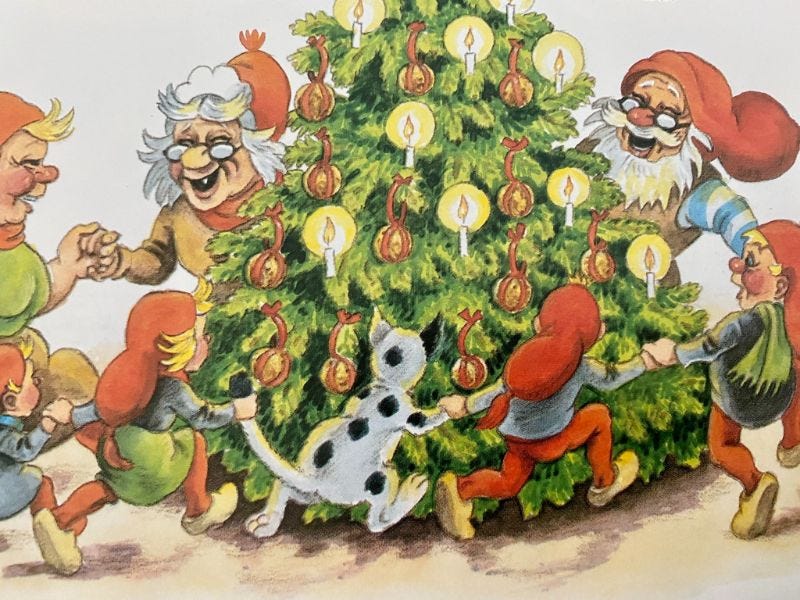
Dear Reader,
Christmas is here, stuffed - like the traditional turkey - full of traditions old and new. My family’s tradition does not involve turkey. Instead, Christmas Eve will find me preparing roast pork, trying my darnest to blister the salted crackling just right, whilst cooking up red cabbage and making rice pudding. We will enjoy a traditional Danish Christmas Eve Dinner, exchanging presents with each other before we go to bed, rising early the following day to check whether Santa has visited our home overnight. When I was a child and we celebrated Christmas in Denmark, I remember putting my clogs out on the doorstep for Julemanden1. Or maybe it was Julenissen2?
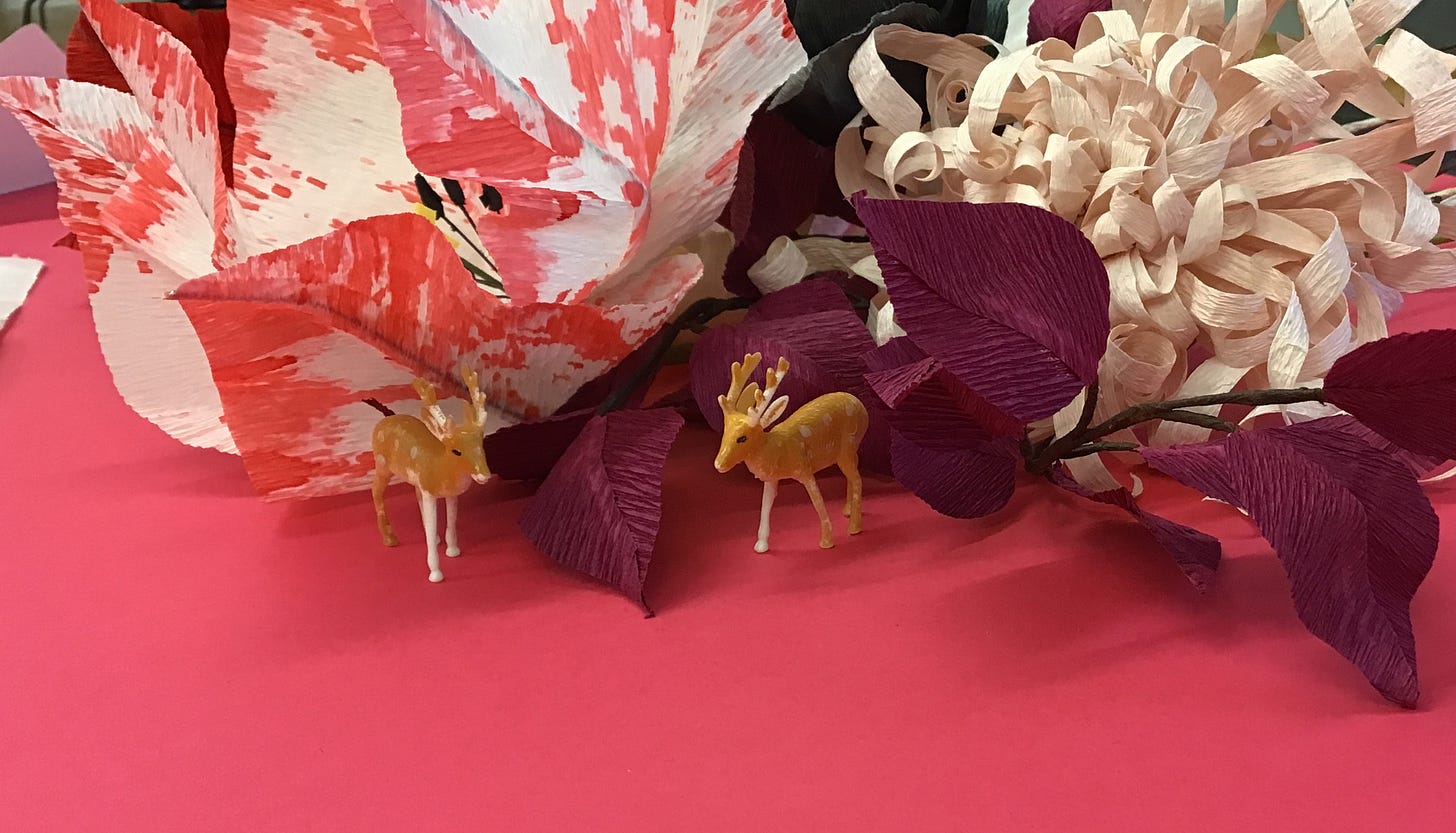
Google translates “Julenissen” to “Christmas Elf” - not quite. The Christmas Nisse is pretty gnarly and old, he looks and dresses quite a lot like a smaller version of Santa, but he’s grumpy, more Raymond Briggs than Miracle on 34th Street. But, he’s an important part of Christmas and we want to keep him happy, so we leave some Julegroed (rice pudding) out for him. The ways our Christmas traditions have changed and evolved are curious. It’s well known that Coca Cola co-opted Father Christmas in 1931, with artwork inspired by Saint Nicholas of Myra, a 4th century bishop who was often depicted with a bushy white beard, dressed in red robes. Saint Nicholas (Santa Claus) was known as a miracle worker, a protector of children and patron saint of sailors and voyagers. The cynic in me can’t help thinking that Cola’s Father Christmas is the patron saint of mindless consumerism - and I cannot deny I am as guilty as the next person! So I circle back to the Christmas Eve Dinner - the essential element of a successful Christmas. Sitting at the table with my closest family, at the close of a busy year, during the darkest of days, enjoying our traditional feast. The rice pudding will have a single, whole, blanched almond in it, and the lucky person who finds the almond gets an extra present - that’s my favourite part. And any left over pudding - well, we know who gets that!
Whilst we are on the subject of red cabbage…. I’ll be doing the looking-back-at-2023 thing after I’ve had my delicious Christmas Dinner. But I have a red cabbage story to share! A year ago, I had an extremely satisfying colour session involving said vegetable and various modifiers. Take a look at the gorgeous colours achieved:

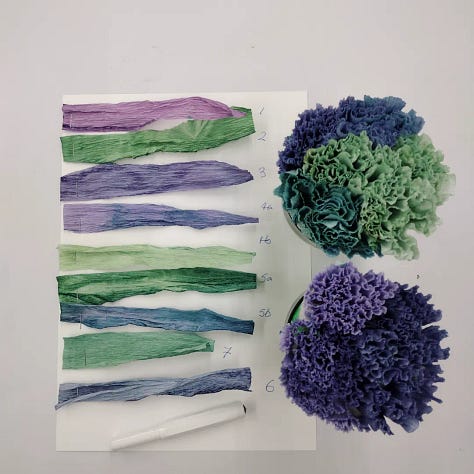
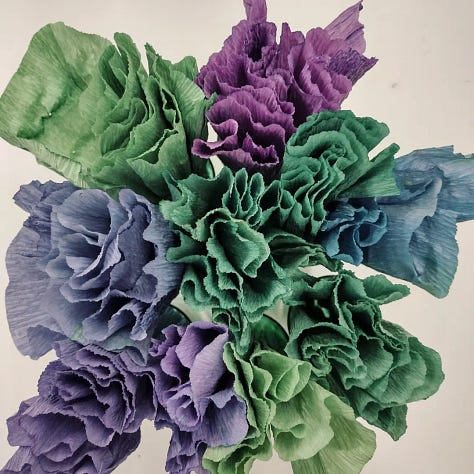
As we know, natural colour is a flighty thing. I knew that these colours wouldn’t last, and I made no claim they would. When I use plant and vegetable matter to create colour my objectives are purely experimental, and I enjoy seeing how the colour changes. I was excited at the range of colours, especially the greens, the result of much experimentation cross dyeing one modifier to another. Modifiers change the chemical balance of the dye bath and can nudge a colour in a variety of directions. Typical modifiers are acidic - such as lemon juice or vinegar, or alkaline such as baking soda pr wood ash. A lot of the these colours faded quickly - running away from me, fugitives, as I knew they would be. But, I was tremendously pleased with these results and therefore shared my excitement in an online group. It’s fair to say the reaction I got was not particularly positive - but what did I expect? This was, after all, a very serious group of natural dyers. I think perhaps something little friendlier than being told to go away and make some coleslaw?! Fortunately I am pretty good at laughing things off. And… I am pretty delighted with how the flowers turned out:
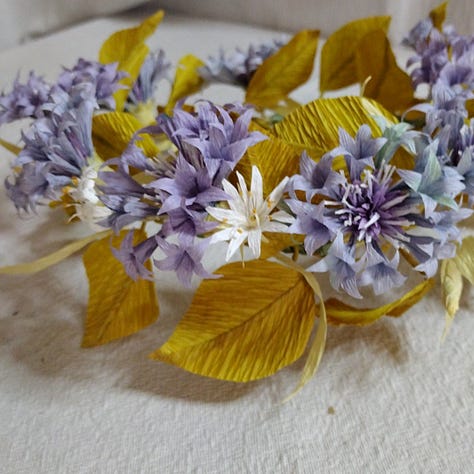
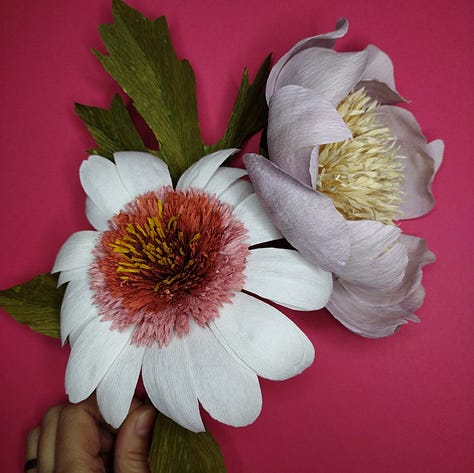
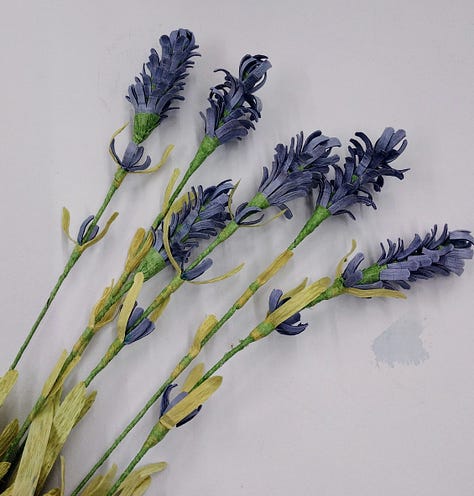
Nice colours, don’t you think? The cornflower wreath is on the wall in my studio and is ( a year later) just as vibrant as the picture. The lavender has faded somewhat, and the lilac peony in the middle picture was made later in the year by which time the colour had become more muted. I used my naturally coloured papers this year to create the national flowers of all the countries represented at Eurovision back in May - and all the flowers I made were exhibited in the World Museum, Liverpool, my very own solo show. So with that, I’ll take my red cabbage, along with the last laugh, and head off home to my kitchen to prepare, not coleslaw, but a delicious Christmas dish.
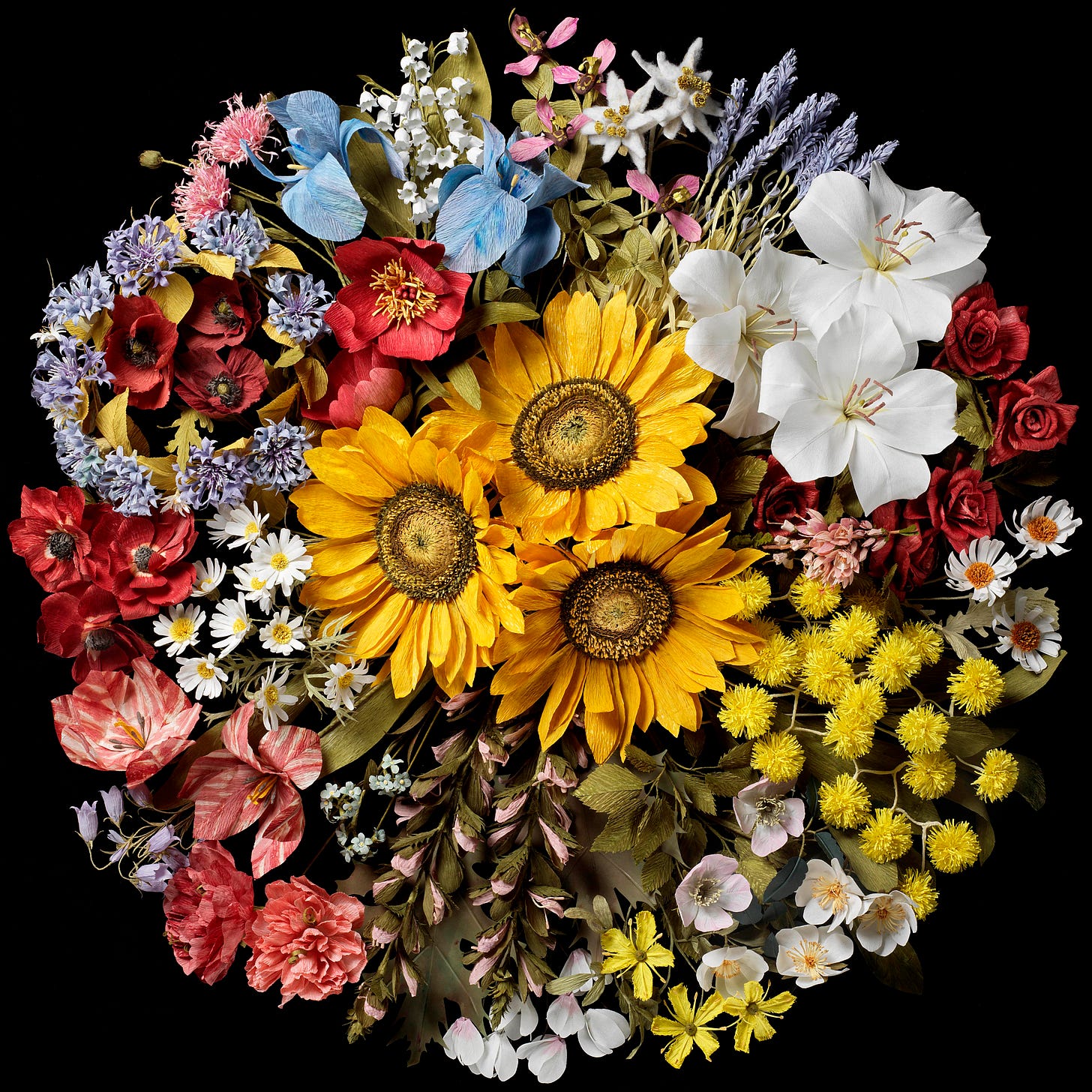
I wish you a wonderful Christmas, dear reader. Thank you for supporting The Paper Wildflower this year, I hope you enjoy my musings, and I would love to hear about YOUR Christmas traditions!
With love, until next year, Ling x
USEFUL INFORMATION
EVENING CLASSES: Winter is rolling out a blanket and around us it seems as though nature is going to sleep. In a few months, Spring will arrive, bringing renewal, optimism, birdsong - and flowers. Until then, why not immerse yourself in flowers and nature by learning the art of paper flower making? The Spring Evening Class Series starts on Tuesday 30th January at Studio 3, 3 Wood Street, Hoylake CH47 2DU.
I will lead you into the enchanting and mindful realm of paper flowers - the perfect escape, a sanctuary from the rigours of daily life and family commitments. Make flowers, make new friends, and immerse yourself in the creative world of botanical observation. Whether you are drawn to form, colour or movement, the art of paper flowers offers the gentle solace of a truly mindful craft. All the inspiration you could ever need to make paper flowers is all around you - you will never tire of exploring the wonders of the botanical world. I share my knowledge and experience and you will have access to my extensive library of resources and botanical art.
Book now to secure your place.
All tools are provided along with a luxury box of high quality paper plus your flower making essentials. Book now and pay a £60 deposit, with £15 per session thereafter. Studio 3, Wood Street, Hoylake CH47 2DU is five minutes from Manor Road station on the Wirral Line
DID YOU KNOW A poster of “Nature’s Palette” including a key to all day materials used is available to buy in my new online store!
Father Christmas (Jule Christmas Manden The Man)
The Christmas….Elf?! Maybe not!




